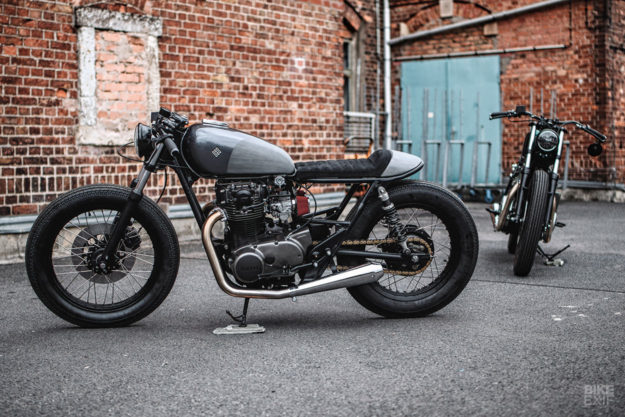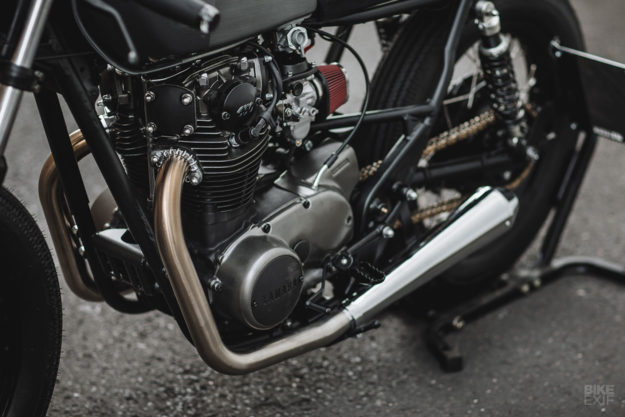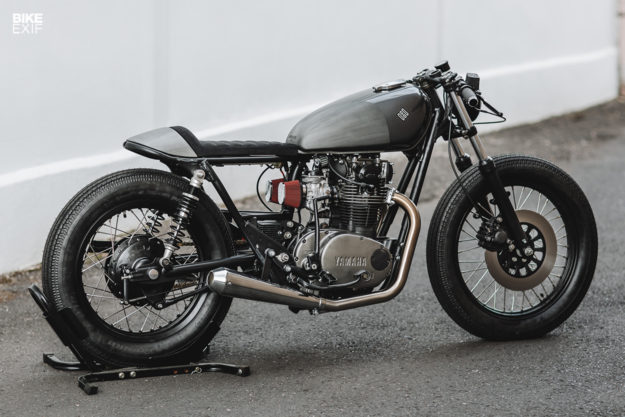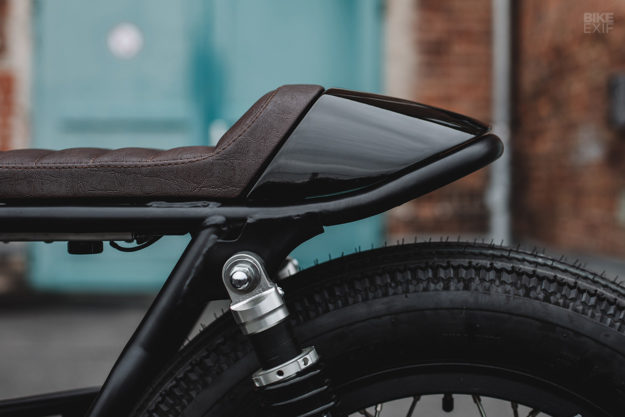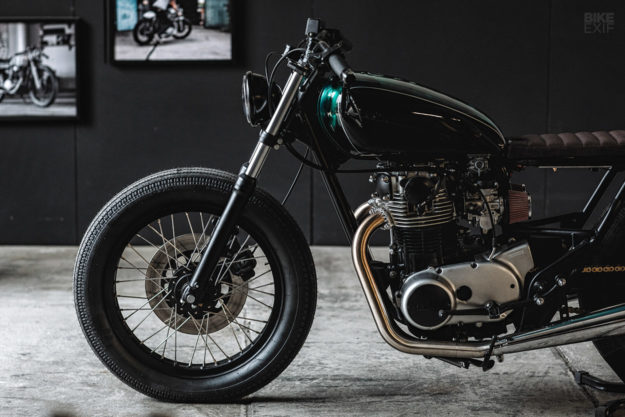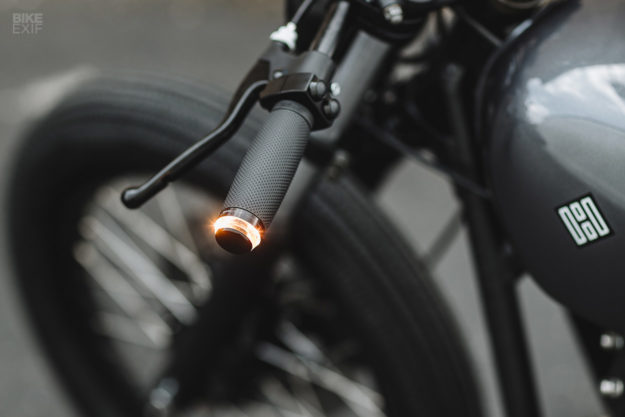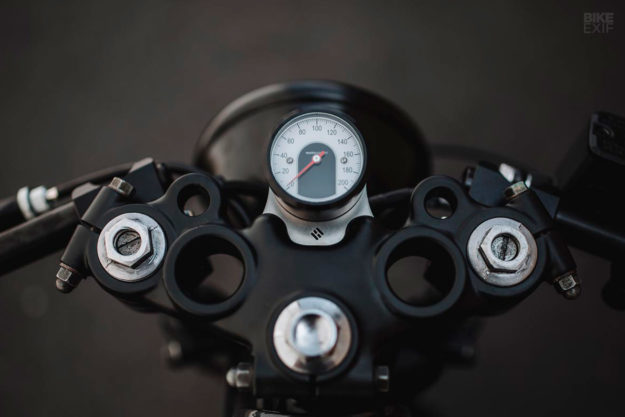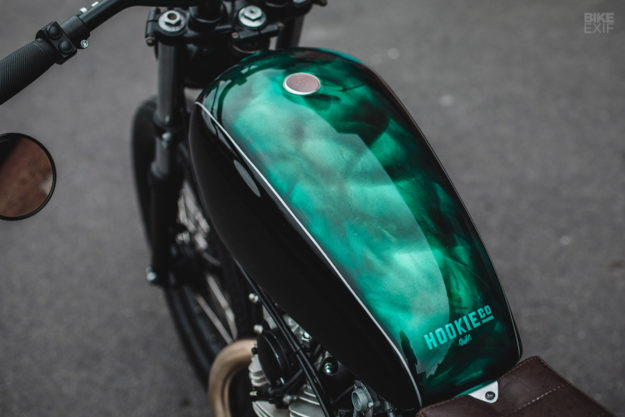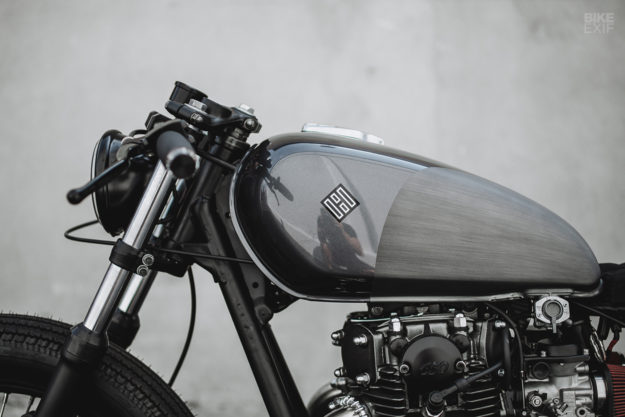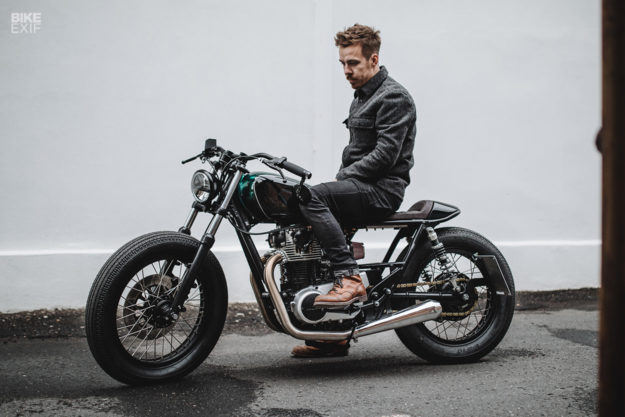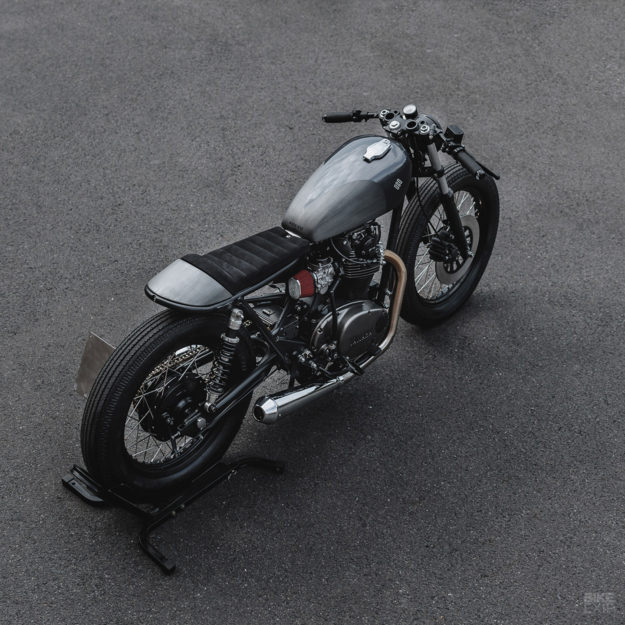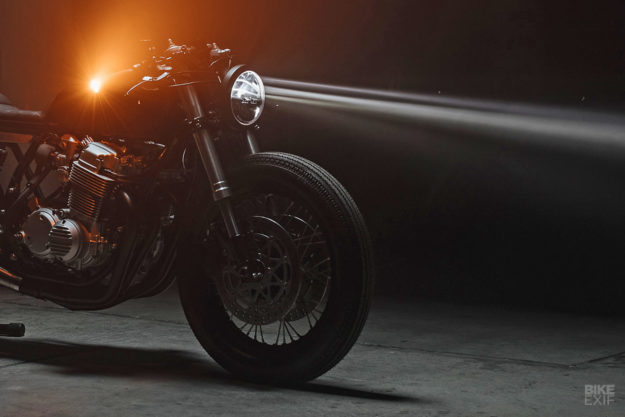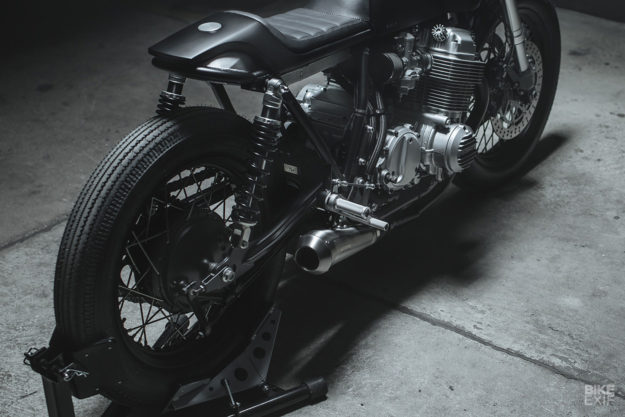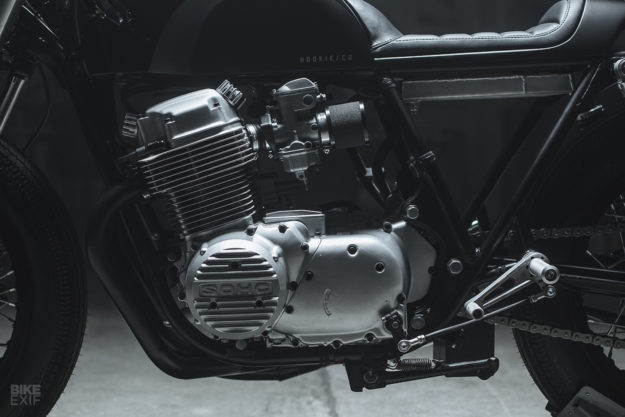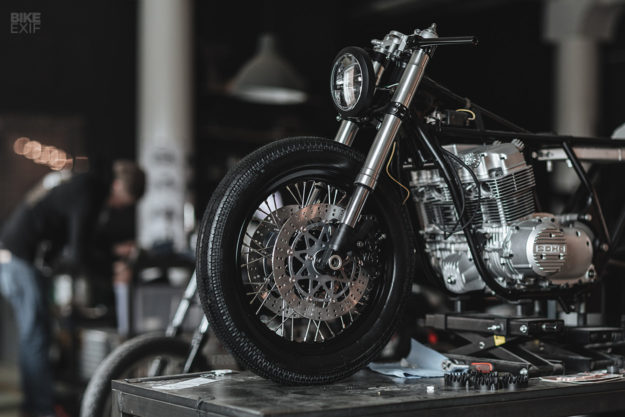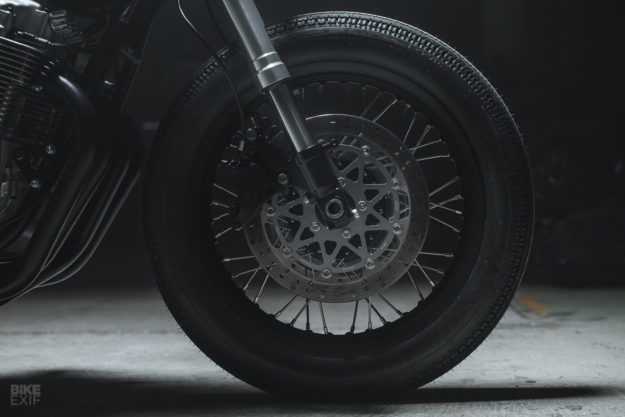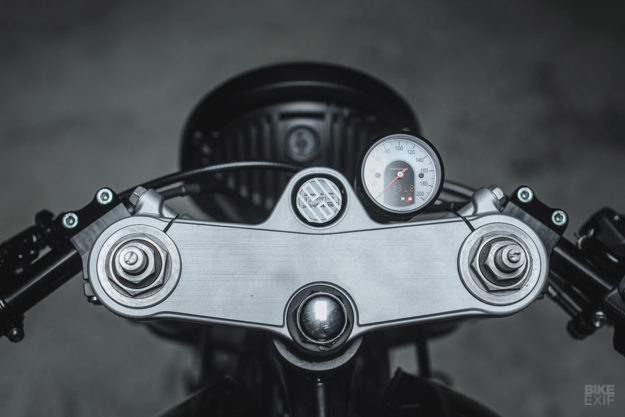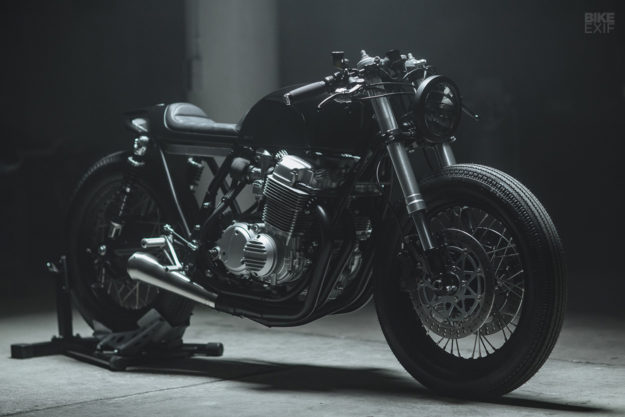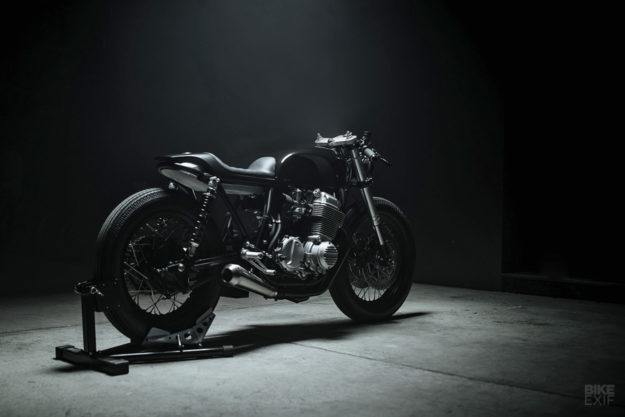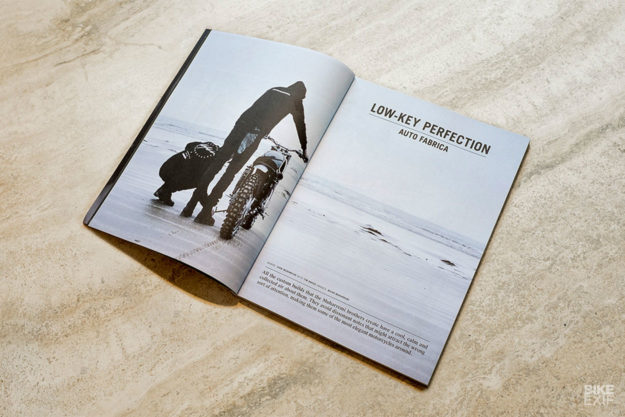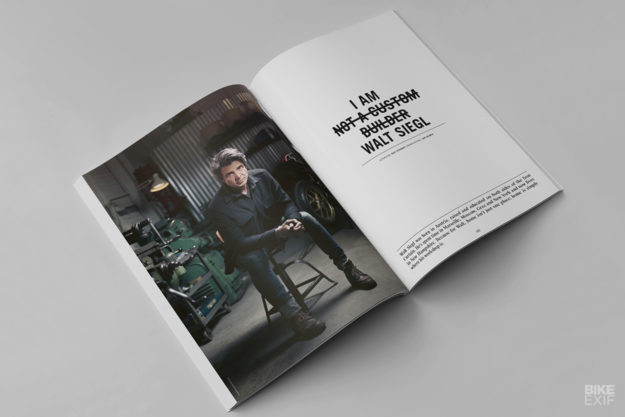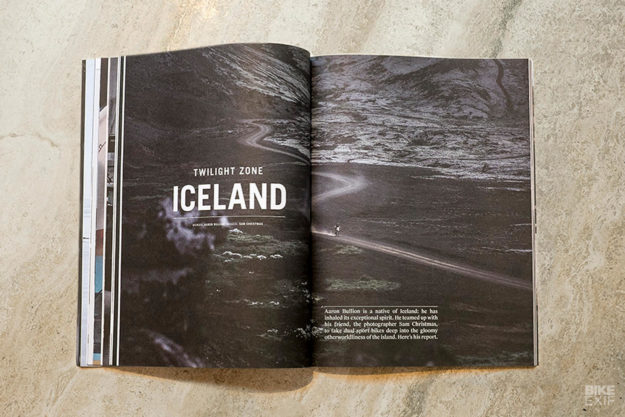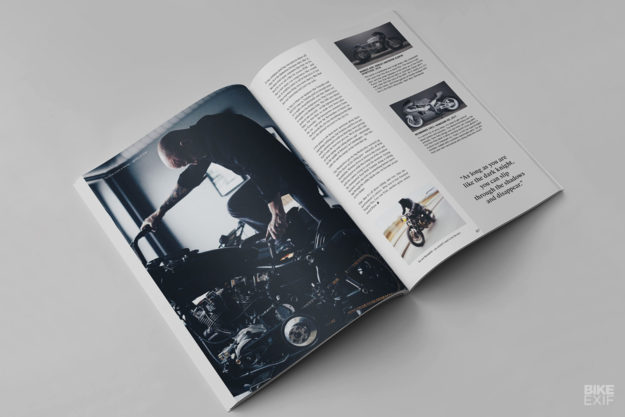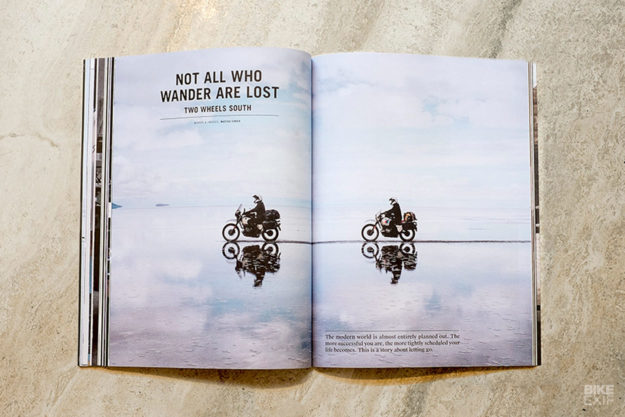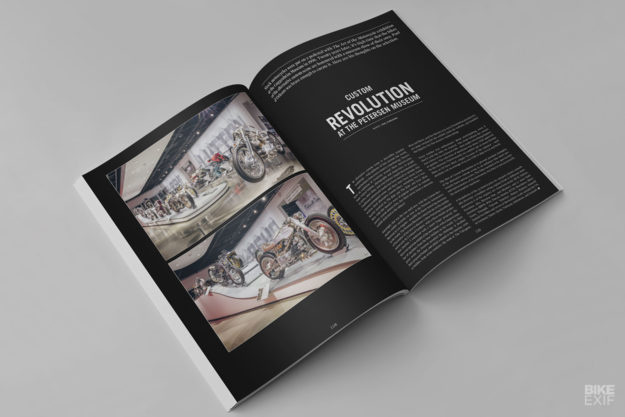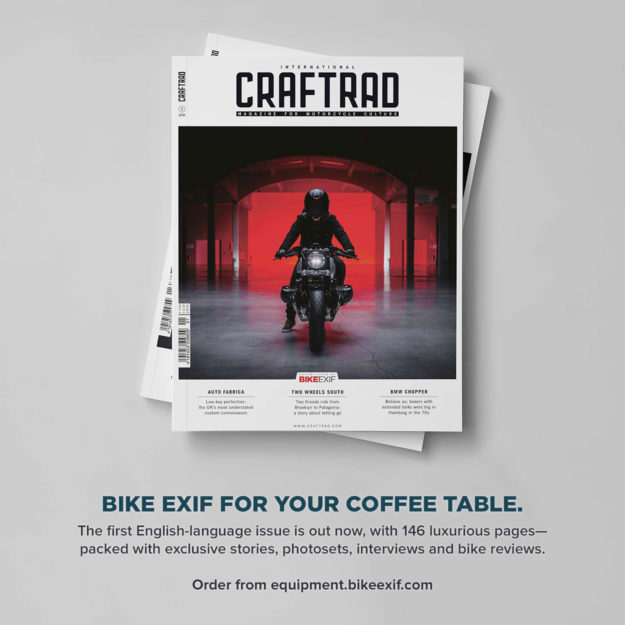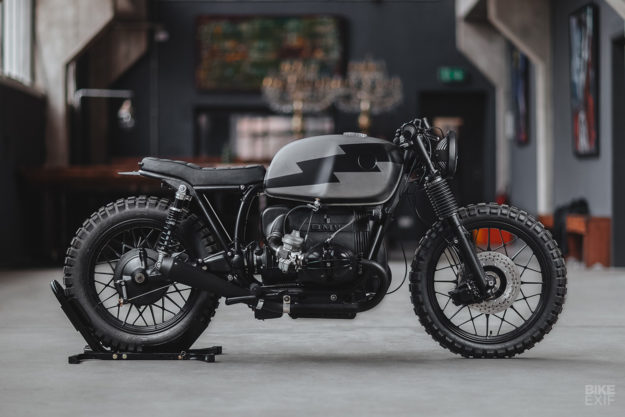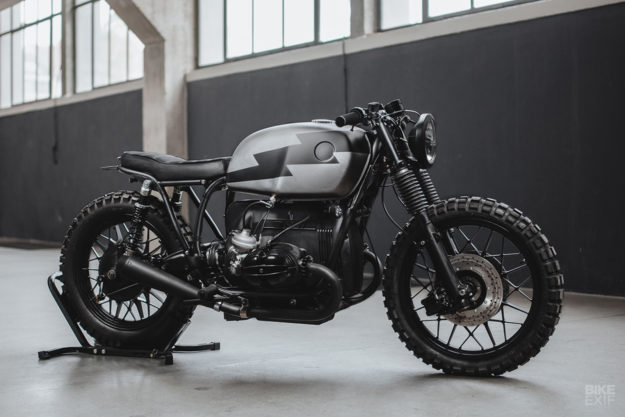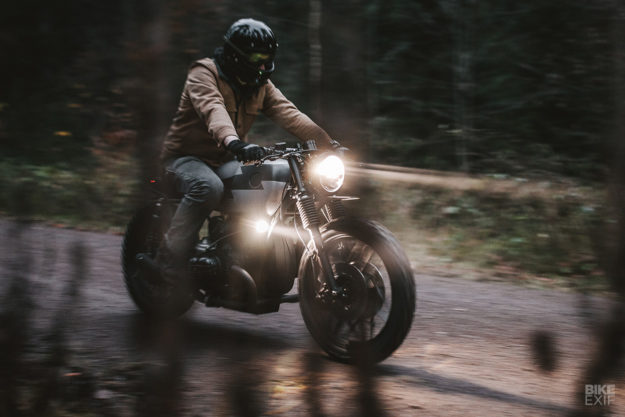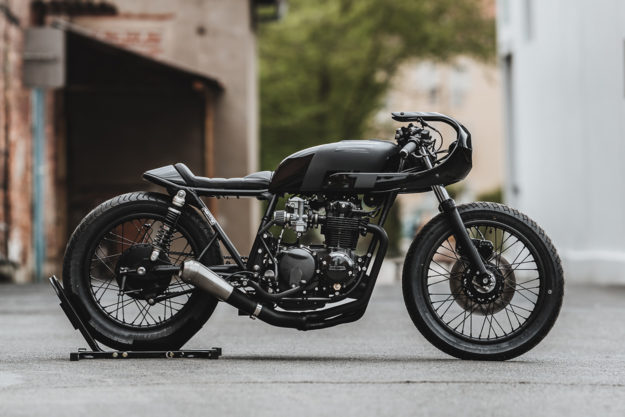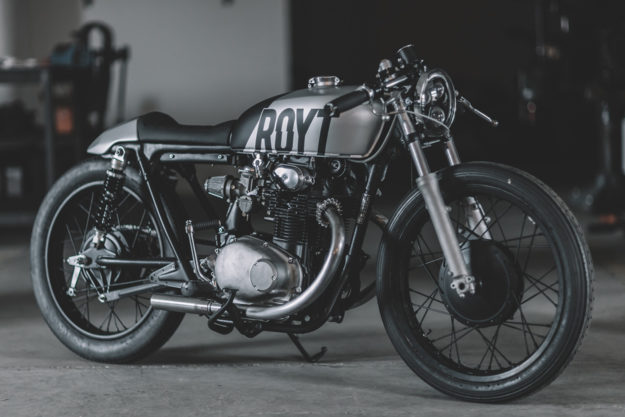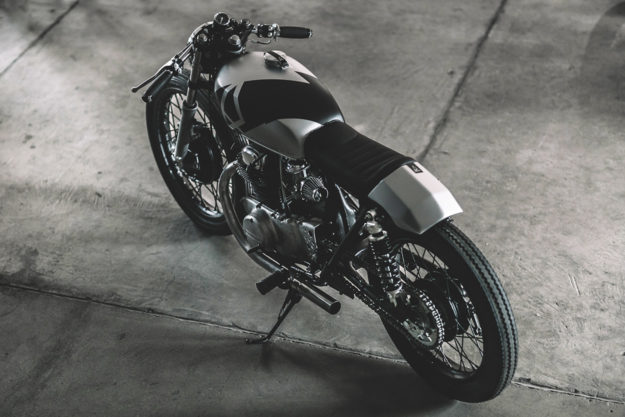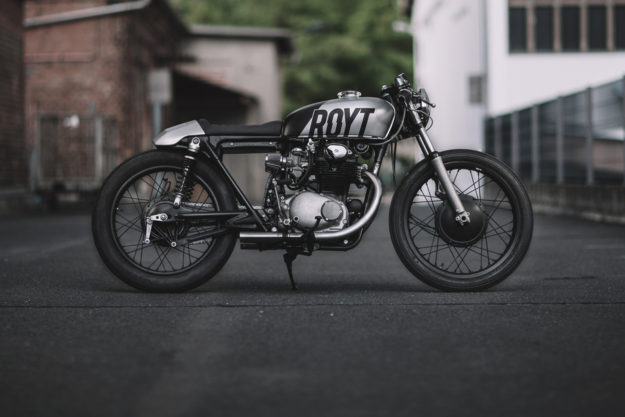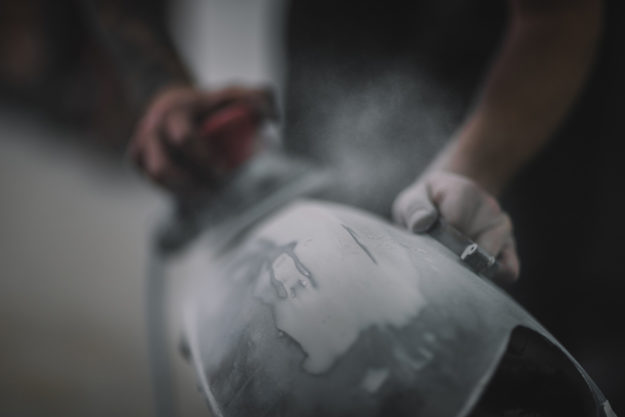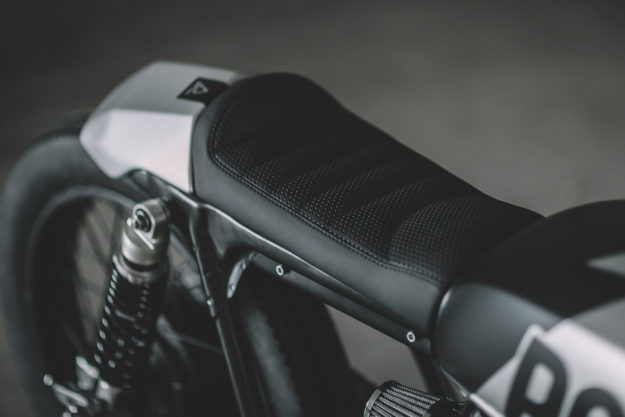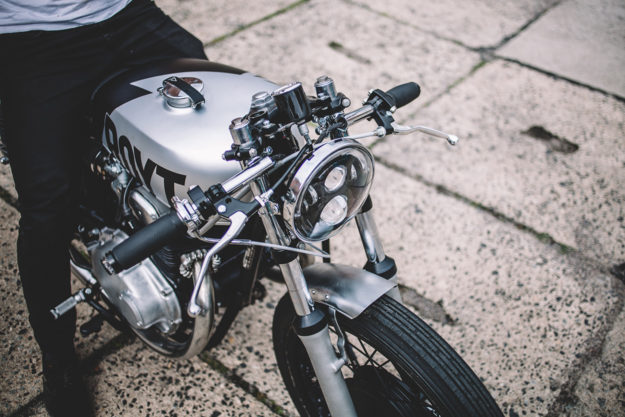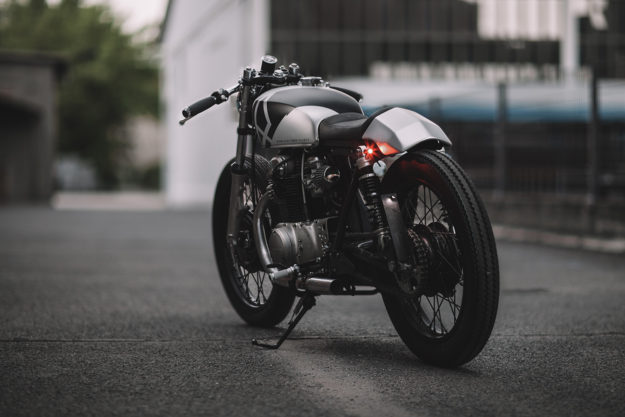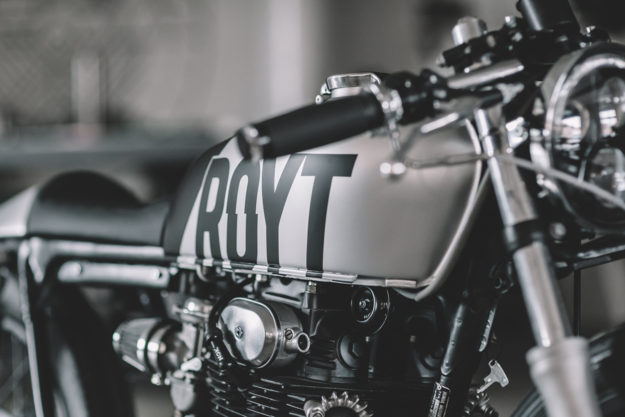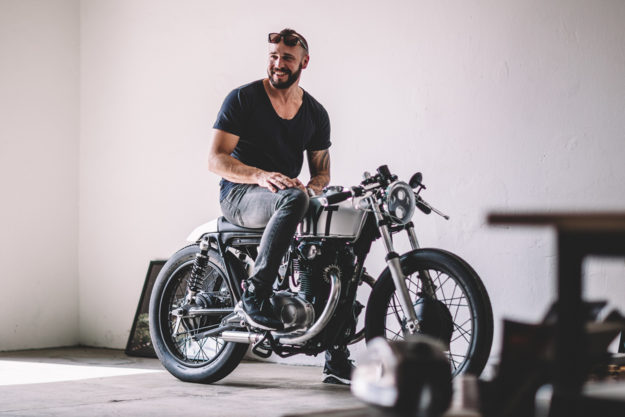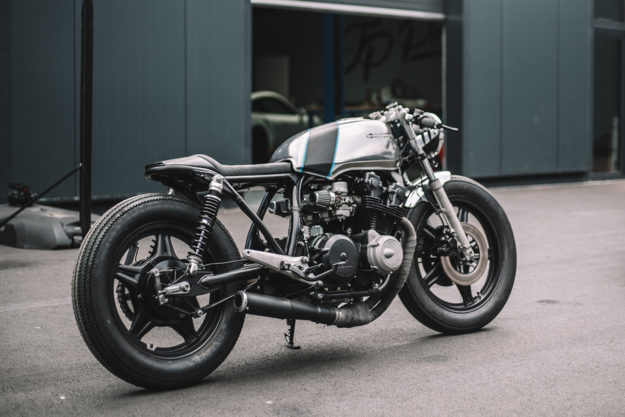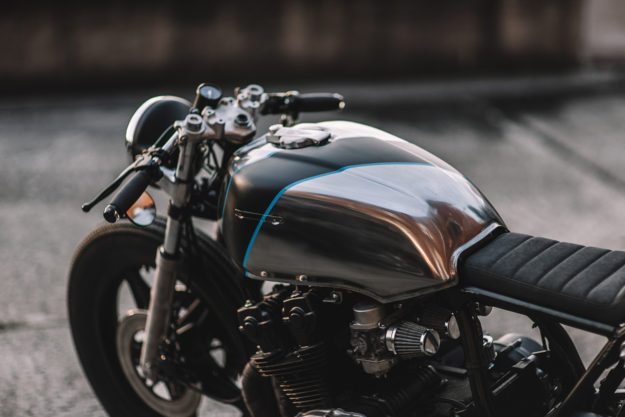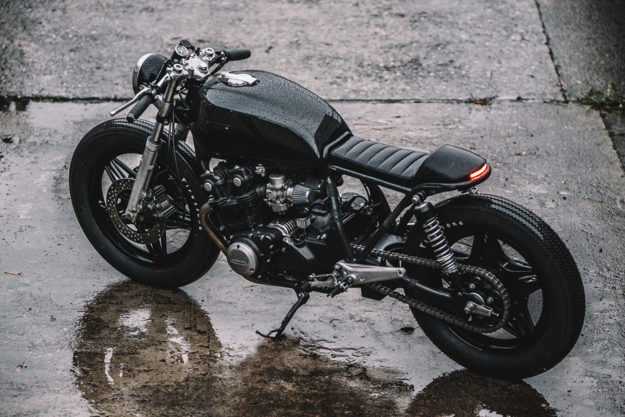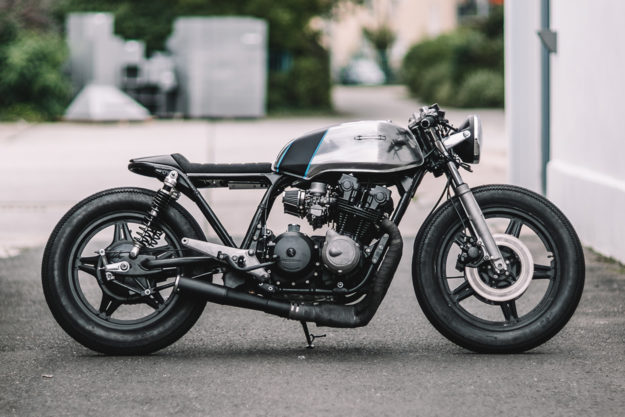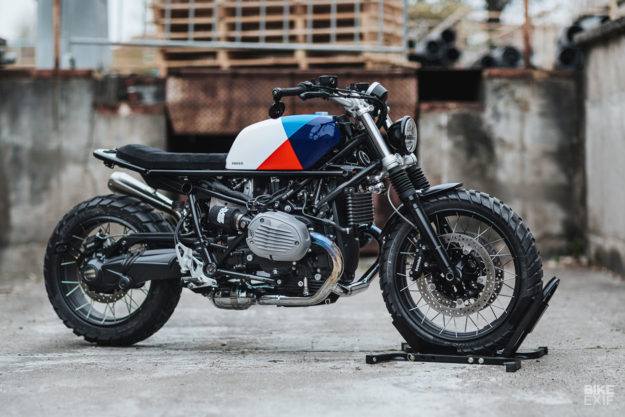
One of the BMW R nineT’s biggest strengths is its modular construction. You can unbolt the rear part of the frame, and unplug sections of the wiring harness without bricking the electronics. It’s good news for pro builders, and even better news for weekend warriors who want to change things up without too much sweat.
The German custom shop Hookie Co. has now exploited this feature with a sharp new scrambler kit for the BMW R nineT. And the bike you see here can be built in an afternoon by anyone with basic spanner skills.
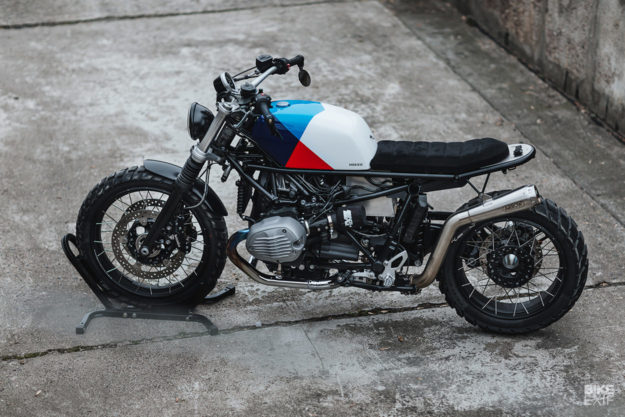
Shop boss and lead designer Nico Müller explains how the project came about: “In the last three years, we’ve built a lot of motorcycles. But over this period we lost sight of Hookie’s roots: design, not the service or restoration of old motorcycles.”
“Now we’re re-organizing Hookie, and focusing more on design solutions based on modern motorcycles. This BMW R nineT Moto-Kit is the first step.”
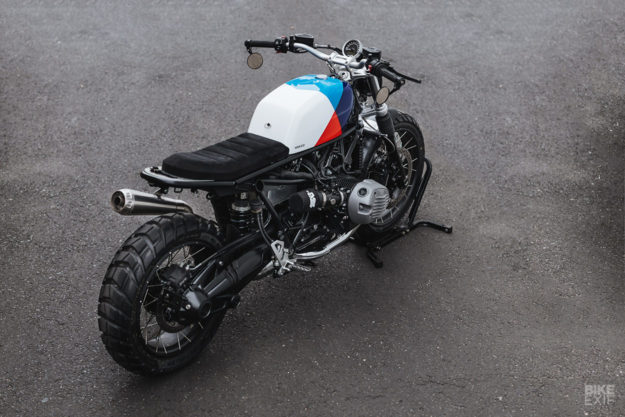
Nico first fell for the R nineT when his team built the ‘Falcon.’ So he bought his own: a 2017-model R nineT Scrambler.
“I rode it for three months like it was, and than I started developing my personal favorite custom bike. A mix between tracker and scrambler: a look which is clean and straight, and with the option to quickly change the style.”
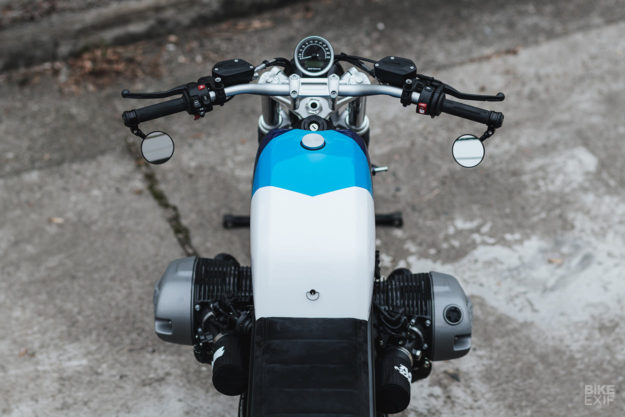
But this time round, Hookie weren’t interested in building a one-off, so they had to change their process. It wasn’t entirely new ground for the German crew, because they already produce a few bolt-on bits for the Honda CB750. But creating a full kit did have its challenges.
Nico had to create technical drawings and CAD renderings for each part, so that everything could be easily reproduced. And he experimented with new materials too, switching to carbon fiber for the fuel tank cover and seat pan.
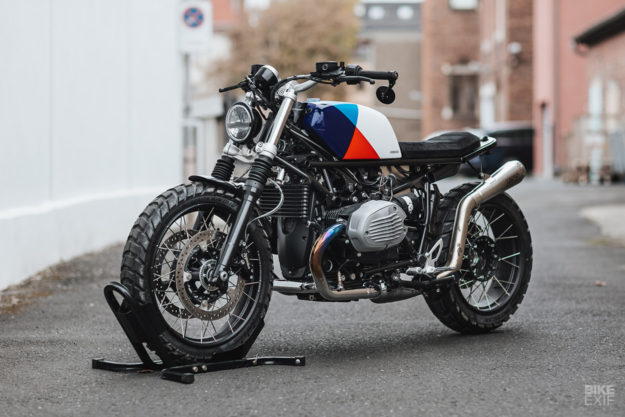
The challenge was to develop bolt-on parts that wouldn’t require expert skill levels to fit, or any cutting, grinding or welding. So every part in the kit comes ready-painted or powder coated, and attaches to existing mounting points on the R nineT’s frame.
To install it, you’ll need to strip off the stock bike’s fuel tank, seat, full subframe, rear fender and rear light cluster. You’ll also need to ditch the OEM battery, a plastic cover that hides some wiring, and the air box.
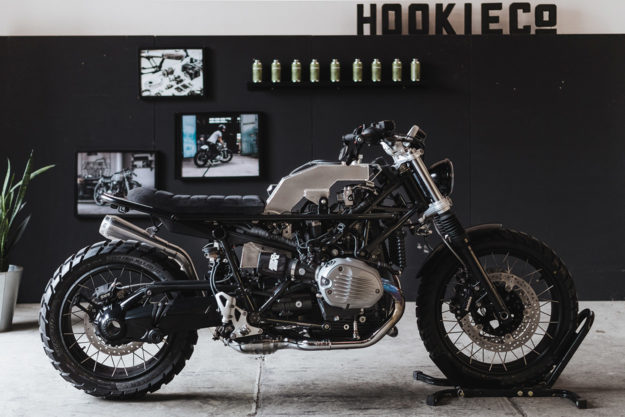
The rebuild starts with a new full-length subframe that runs all the way up to the fuel tank’s original mounting points in front. Then you’ll need to transfer the fuel pump to a new fuel cell, which attaches to the new subframe via vibration-dampened fasteners.
A carbon fiber tank cover then goes over the fuel cell, held by three quarter-turn fasteners. The idea here, say Hookie, is to give customers a way to change up their R nineT’s color scheme in a heartbeat.

The kit ships with a matte black and gloss carbon finished cover, but the ‘Tricolor’ cover on Nico’s bike is available as an optional extra.
The rear half of the BMW is reworked with an electronics tray that doubles as a rear luggage plate. Up top is an Alcantara seat, sitting on a carbon fiber base. And just behind it, Hookie have added a handy little cargo strap from Snake. (In the shot below, it’s looped into a tail pack from Alms NYC.)
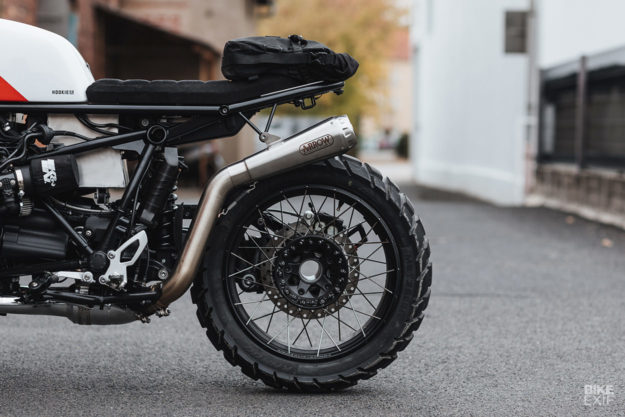
All the R nineT’s stock wiring and electrical bits are plug and play—but you’ll need to swap the stock battery for an Antigravity Lithium-ion unit, which you’ll need to source yourself. And since there’s no more air box, Hookie include a full set of K&N air filters and breathers.
Some of the finer details are left to the customer—like the rear light and turn signals. Nico’s opted for discreet LED units from Kellermann, and he’s added an LED Bates-style headlight up front. His bike’s customized further with bar-end mirrors and an off-the-shelf Arrow exhaust.
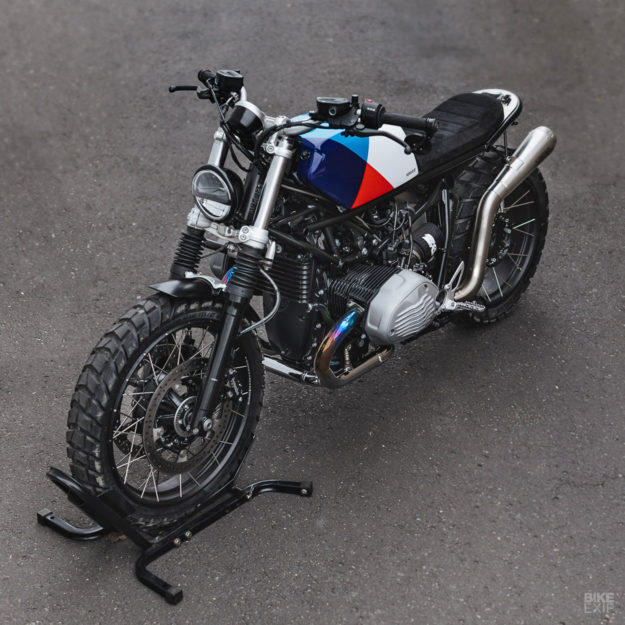
He’s also lowered it 30mm, using a lowering kit from Hyperpro—“I’m only 171 cm (5’7″) tall,” he reveals. His Scrambler is also wearing a few from-the-factory upgrades: tubeless spoked wheels, Metzeler Karoo 3 tires, and finned valve covers.
The R nineT Moto-Kit is designed to fit the R nineT Scrambler and Pure models, but Hookie tell us it’ll work on other R nineTs too. And at €6,900 (US$7,900) it’s fine value too.
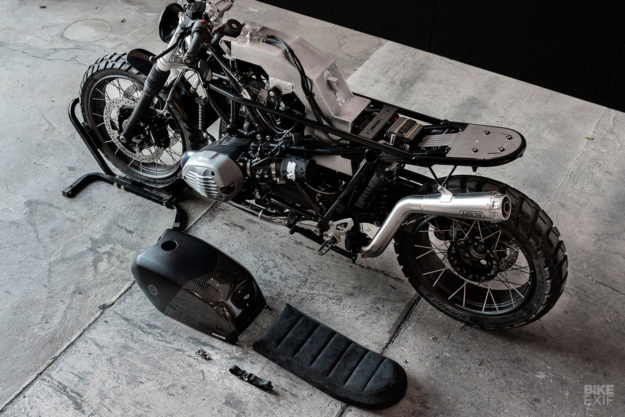
Since everything’s designed to fit together, Hookie are only selling it as a complete package. But they’re planning to add more tank cover liveries and seat options to their catalog in the coming months—plus a café racer-style seat.
It’s one of the coolest BMW R nineT conversions out there, and also one of the raddest DIY kits we’ve ever come across. If we had an R nineT in the garage now, this would be high on the want list.
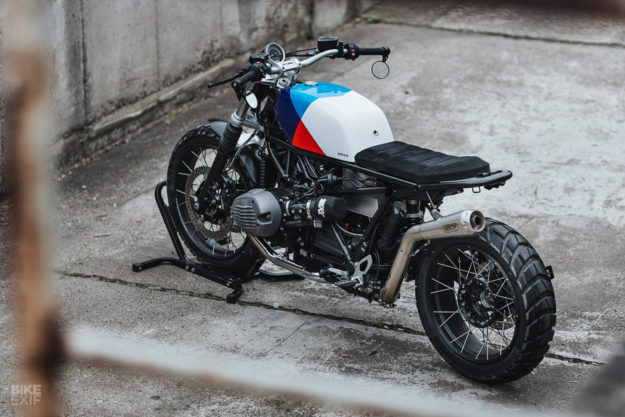
If you’re tempted, place your order via the Hookie website before the end of November—you can get a handy 10% off the price using the code ‘playhookie’.
Hookie Co. website | Facebook | Instagram
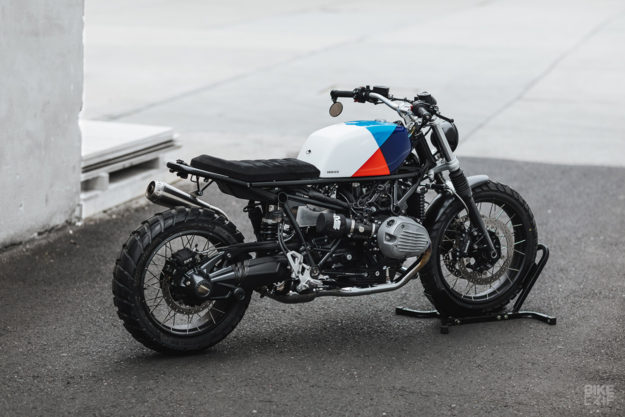
The BMW R NineT Moto-Kit includes
Subframe (25mm steel tube)
Fuel tank with approx. 11 liters fuel capacity
2 x K&N Air filters SN-2530
1 x K&N Engine breather filter 62-1040
2 x K&N Air filter mesh covers SN-2530PK
Carbon fiber tank cover ‘Stealth’
Electronics tray (aluminum)
Alcantara seat on carbon fiber pan
Snake Cargo Strap with AustriAlpin Cobra quick release buckle
All hardware parts
Manual
